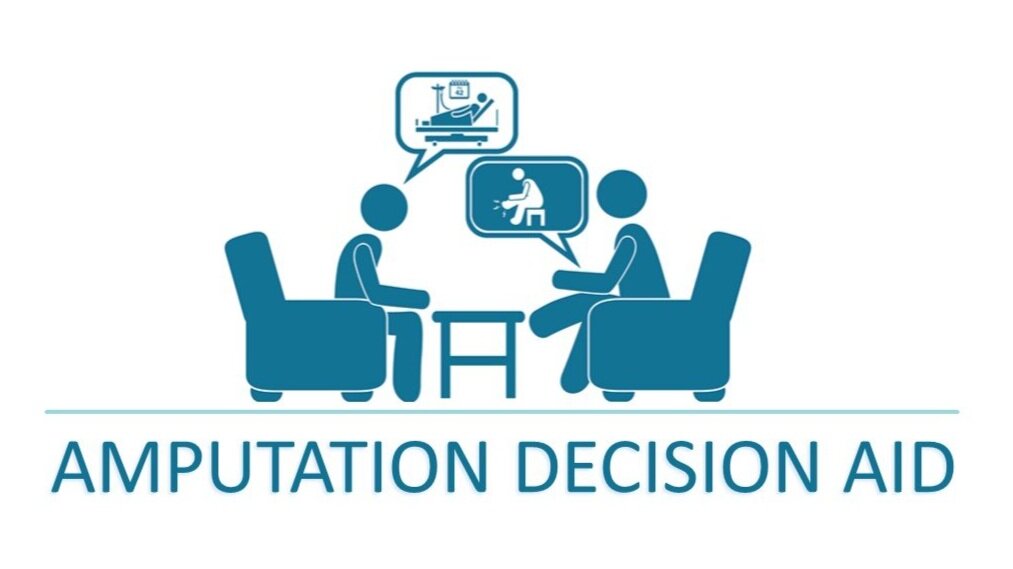Amputation Discussion Guide
The Amputation Discussion Guide is written specifically for healthcare professionals. It includes up-to-date research evidence and example conversation starters to facilitate meaningful conversations tailored to the needs of each individual patient. The Amputation Discussion Guide is a companion to the Amputation Decision Aid. Both resources include the same information to help ensure everyone is on the same page.
Conversation starters
Unlike a cancer diagnosis, where the risk of dying is at the forefront of people’s minds, discussions about amputation surgery often lead people to ask whether they’ll walk again.
Given that it can be difficult to talk about the risk of dying we’ve created a series of conversation starters. In this way, clinicians can open up important conversations that help people reflect on what is most important at this stage of their life, and make informed decisions knowing the risks.
There are conversation starters for all sorts of topics: the risks of wound healing and complications, pain, as well as psychosocial outcomes such as depression and anxiety.
Individually tailored
The Amputation Discussion Guide also includes a summary of the research evidence written for health professionals.
In this way, clinicians can tailor the conversation to the needs of each individual patient. For example, we know that the factors that most influence the risk of dying in the years after amputation surgery are older age, and the presence of multiple comorbid health conditions such as congestive heart failure or renal disease.
Sometimes we just don’t know.
Sometime we just don’t have good research evidence to answer specific questions. For example, there haven’t been any studies about psychosocial outcomes, like depression or anxiety, in people living with partial foot amputation due to peripheral arterial disease.
While it is important to be candid about what we don’t know, it is also important to provide information that is both truthful and helpful. By drawing on related evidence, such as the experience of depression and anxiety in people with other levels of limb loss, we can help highlight that these experiences may also be common in people living with partial foot amputation.
Just knowing that the path ahead can be uncertain, can help many people cope with the challenges ahead.




